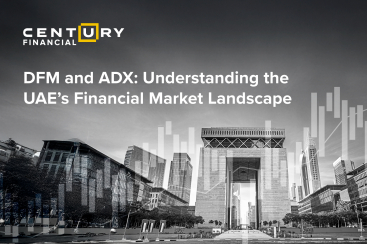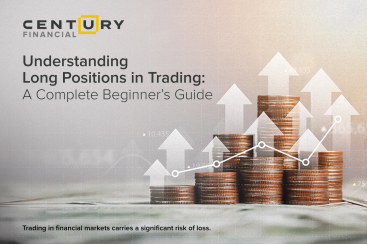
.jpg)
Introduction
Ever travelled abroad and noticed that your money doesn’t stretch the same way everywhere? One day, a dollar might fetch more euros, and the next, it buys less. That’s the foreign exchange market in action, forex for short. It’s the ever-shifting playground where currencies are bought, sold, and valued against each other.
At the heart of this is the exchange rate, basically, how much of one currency you need to get another. But unlike prices on store shelves, these rates don’t stay put. They move. And they move because of a mix of real-world factors: economic data, interest rates, politics, and even trader psychology.
So, what exactly makes a currency rise or fall? Let’s break it down.
What Are Forex Rates?
A forex rate (or exchange rate) tells you the price of one currency in terms of another. For example, if you’re traveling from the U.S. to Japan and the exchange rate is 1 USD = 144.40 JPY, that’s your rate.
These rates are always changing. They respond to what's happening in economies and financial markets around the world. From major banks to casual travellers, forex rates affect everyone, impacting trade, investments, and even the cost of your next vacation.
.png)
Floating vs. Fixed Exchange Rates
Not all exchange rates are created equal. Some float freely, while others are held in place.
Floating Exchange Rates:
These move up and down based on supply and demand. Most major currencies, like the U.S. dollar, euro, and British pound, fall into this category. They're influenced by things like inflation, interest rates, and economic performance.
Fixed Exchange Rates:
In this setup, a country pegs its currency to another, usually the U.S. dollar to maintain stability. Think of the UAE dirham or the Hong Kong dollar. While this keeps things predictable, it limits how flexible a country can be with its monetary policy.
So, What Actually Moves Forex Rates?
Let’s look at the heavy-hitters behind those daily fluctuations in currency value:
Interest Rates
Higher interest rates generally attract foreign investors looking for better returns on their money. That demand pushes the currency’s value up.
Example:
In 2024, the U.S. Federal Reserve raised its benchmark interest rate to around 4%, aiming to curb inflation. Meanwhile, the European Central Bank signalled a more dovish stance due to slowing growth in the eurozone. This interest rate divergence made U.S. dollar-denominated assets more appealing to global investors. As a result, the EUR/USD exchange rate fell from around 1.12 in mid-2024 to lower levels, as traders shifted capital towards the higher-yielding U.S. dollar.
Impact:
This shift in capital flows strengthened the U.S. dollar. Conversely, lower or falling interest rates in a region typically reduce investor returns, making the currency less attractive and causing it to weaken in the forex market.
Inflation
Inflation is the rate at which prices rise. When a country has high inflation, the purchasing power of its currency erodes. No one wants to hold a currency that buys less every year.
Countries that manage to keep inflation low and stable usually enjoy stronger currencies over time. Think of it like this: steady prices help build investor trust. Uncontrolled inflation? Not so much.
Example:
Turkey in 2022 slashed interest rates despite 85%+ inflation, causing the lira to crash, imports to spike, and inflation to spiral further triggering a currency crisis.
Impact:
Loose policy during high inflation erodes investor trust and weakens currency. In contrast, tight policy (like the U.S. Fed’s hikes) can strengthen currency despite inflation.
Economic Performance
Strong economic growth is good news for a currency. When GDP is rising, jobs are being created, and businesses are booming, international investors take notice.
Example:
In 2024, Canada’s improving employment figures and rising manufacturing output led traders to anticipate interest rate hikes from the Bank of Canada. This expectation supported the Canadian dollar’s strength during that period.
Impact:
Robust GDP growth and employment numbers encourage investors to buy assets denominated in that currency, increasing demand and pushing up its value. Conversely, weak economic data can lead to currency depreciation.
Political Stability (or the Lack of It)
Markets love stability. When a country has a stable government and predictable policies, investors feel more comfortable parking their money there. This helps support the currency.
But throw in a political crisis, unexpected election results, or sudden policy changes, and confidence can evaporate. Investors may pull out funds, weakening the currency as they go.
Example:
During the peak of Brexit uncertainty, the British pound (GBP) experienced significant volatility and depreciation due to fears about the UK’s future relationship with the EU and economic prospects.
Impact:
Political turmoil often leads to rapid capital outflows and currency depreciation. Stable political environments attract long-term investment and currency appreciation.
Market Speculation
Traders aren’t just reacting to the news they’re often trying to get ahead of it. Forex markets are full of speculators who place bets based on what they think will happen.
Let’s say there’s buzz that the European Central Bank might hike interest rates soon. Even before it happens, traders may start buying euros in anticipation, which can drive the currency higher.
Example:
In 2024, speculation about the ECB potentially hiking interest rates led traders to buy euros in anticipation, temporarily driving the EUR/USD pair higher before actual policy changes
Impact:
Market sentiment and forward guidance from central banks can cause short-term volatility and significant currency movements, sometimes independent of current economic fundamentals.
What Actually Moves The Forex Rates?
| Driver | Typical Effect on Currency |
|---|---|
| Interest Rates | Higher interest rates usually strengthen a currency, as they attract foreign investment seeking better yields. Lower rates tend to weaken a currency by making it less rewarding to hold. |
| Inflation | Higher inflation (relative to other countries) erodes a currency’s value and typically leads to depreciation. Low, stable inflation supports a stronger currency by preserving purchasing power. |
| Economic Growth & Indicators | Strong GDP growth and positive economic data boost a currency (signalling a healthy economy and possibly higher interest rates). Weak economic indicators can undermine a currency as investors seek better opportunities elsewhere. |
| Political Stability | Stable governance and policy predictability make a currency more attractive (capital flows in), supporting its value. Political turmoil or uncertainty can cause a currency to drop as investors flee to safer havens. |
| Central Bank Policy | Tight or hawkish policy (rate hikes, stopping money-printing) tends to strengthen a currency. Loose or dovish policy (rate cuts, quantitative easing) often weakens it. Direct currency interventions by the central bank can abruptly raise or lower the exchange rate. |
| Trade Balance | A trade/current account surplus creates extra demand for a currency (foreign buyers need the currency for exports), which can strengthen it. A deficit often adds supply of currency on the market and can lead to depreciation over time if not financed by capital inflows. |
| Market Sentiment & Speculation | In ‘risk-off’ climates, investors buy safe-haven currencies (e.g., USD, JPY), pushing their values up. In optimistic times, money flows to higher yielding/riskier currencies, boosting those. Large speculative bets can amplify moves or cause overshooting in either direction. |
How Are These Rates Actually Calculated?
In a floating system, it comes down to supply and demand. If more people want to buy a currency than sell it, the price goes up and vice versa.
But that’s not the full story. Big institutional players, like central banks and hedge funds also influence the flow. Central banks, for instance, may step into the market to buy or sell their own currency if they think things are moving too fast in one direction.
In fixed systems, it's more controlled. The central bank keeps the rate stable by buying and selling currencies or using foreign reserves to maintain the peg.
.png)
Real-World Example Time
Let’s take a quick look at how this plays out in the real world.
In 2022, when inflation began surging globally, the U.S. Federal Reserve started aggressively raising interest rates. This made U.S. assets more attractive to global investors, boosting the dollar’s value significantly against other currencies like the yen and euro.
Meanwhile, countries with slower rate hikes or political uncertainty saw their currencies weaken during the same period.
How does it affect You?
Even if you're not a trader, forex rates affect you more than you might think.
.png)
Traveling abroad?
A stronger home currency means your money goes further.
.png)
Investing internationally?
Currency swings can impact your returns.
.png)
Running a business?
Exchange rates affect the cost of imports and exports.
So, knowing the basics of what moves forex can help you make better financial decisions whether it’s timing a trip, hedging a risk, or spotting investment opportunities.
Conclusion
At first glance, forex markets might seem chaotic. Rates jumping up and down, reacting to headlines from across the world. But underneath the noise, the mechanics are surprisingly logical.
Currencies reflect economic fundamentals and investor sentiment. If a country’s economy is growing, stable, and offering attractive returns, its currency will likely strengthen. If the opposite is true, the currency may struggle.
No one can predict exchange rates perfectly, but by understanding the key drivers, interest rates, inflation, political events, and market psychology you can get a solid grip on what’s going on.
In the end, forex isn’t just about numbers. It’s a global story told through currencies. And now that you know what shapes that story, you’re one step closer to reading the plot as it unfolds.
FAQs About How Are Forex Rates Determined
Q1: Why do forex rates fluctuate?
A: Forex rates fluctuate due to changes in supply and demand, economic indicators, interest rates, inflation, and geopolitical events. Global news, central bank policies, and investor sentiment also contribute to rate movements.
Q2: How are currency exchange rates determined in a floating system?
A: In a floating system, exchange rates are determined by market forces such as demand, supply, and investor sentiment. Currency values shift based on economic reports, central bank decisions, and global trade balances.
Q3: How can I protect my investments from currency fluctuations?
A: You can use hedging strategies like forward contracts, options, and currency diversification to reduce risks associated with exchange rate fluctuations. Staying updated on financial news and economic trends also helps manage exposure to currency volatility.
With a deeper understanding of what affects commodity prices and forex exchange rates, individuals and businesses can make more informed financial decisions, safeguarding their assets against unpredictable currency movements.
The content in this blog, including any research, analysis, opinions, forecasts, or other information (collectively, "Information"), is provided by Century Financial Consultancy LLC (CFC) for marketing, educational, and general informational purposes only. It should not be construed as investment advice, a recommendation, or a solicitation to buy or sell any financial instruments.
This Information may also be published across various channels, including CFC’s website, third-party platforms, newsletters, marketing materials, emails, social media, messaging apps, webinars, and other communications. While CFC strives for accuracy, we do not guarantee the completeness, reliability, or timeliness of any content. Any decisions made based on this Information are at your own risk. CFC accepts no liability for any loss or damage arising from its use.
Trading financial products involves significant risk and may not be suitable for all investors. Please ensure you fully understand the risks and seek independent professional advice if necessary.
Please refer to the full risk disclosure mentioned on our website.









.png)
.png)
.png)
.png)


